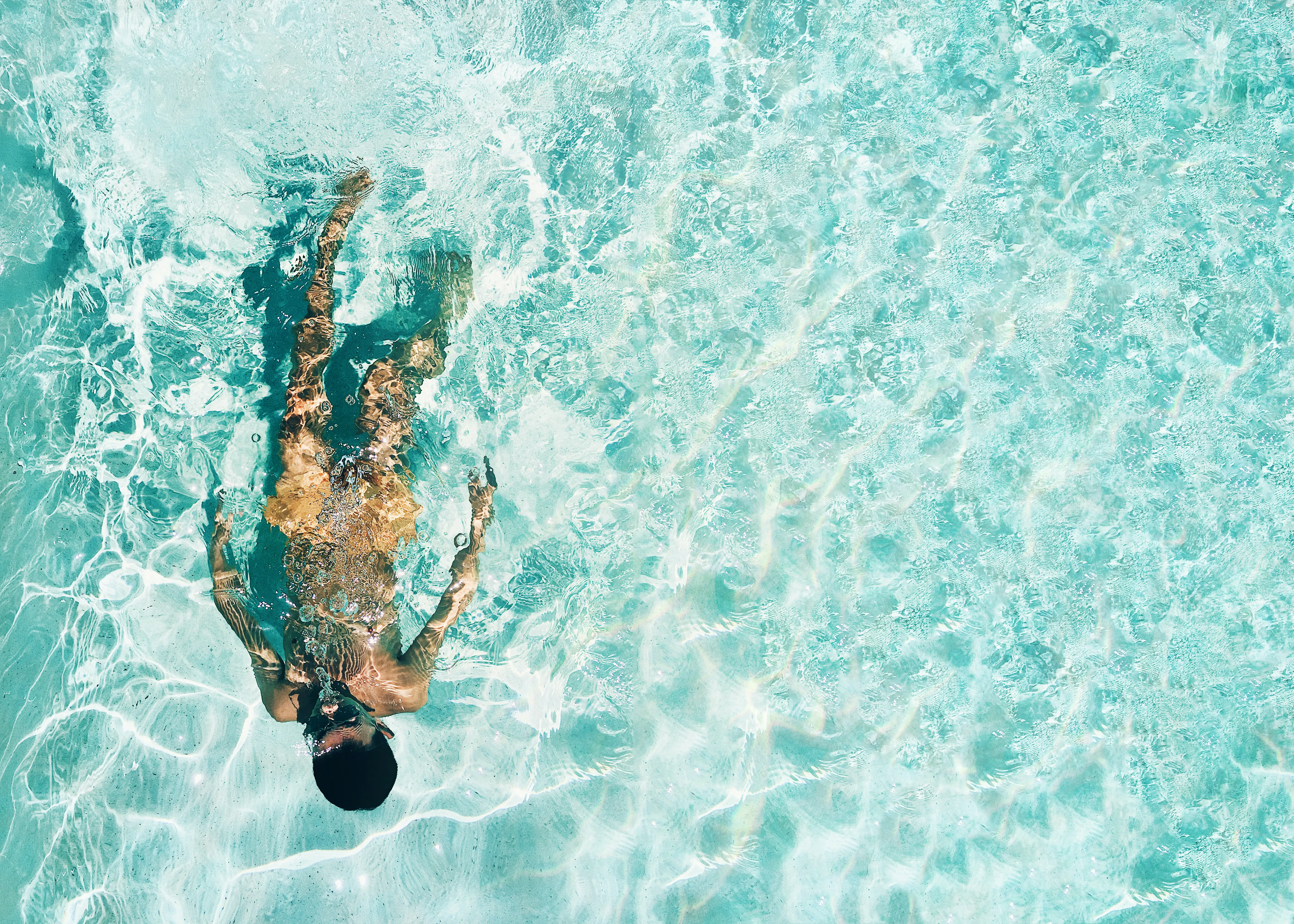A too-high chlorine level in a pool can be dangerous. That’s why the chlorine level needs to be checked. When the chlorine level in a pool becomes too high, it can cause skin and respiratory irritation and other problems. It’s essential to recognize the signs of high chlorine levels and reduce the chlorine concentration in the pool naturally or with chemical treatments like a chlorine neutralizer. Here are 2 ways to lower or reduce the chlorine level in the pool.
What are the signs of too much chlorine in a pool?
There are multiple ways to measure the chlorine level in a pool: DPD tables, strips, and electronic testers. The chlorine smell is not an indicator; we will explain why.
DPD tablets or strips. These are colorimeter tests. You will get a color that must be transposed to a level range. DPD tablets and strips measure Free chlorine. A pool should have between 2mg/L and 5mg/L of Free chlorine. Chlorine is less effective with a high pH than with a low pH. To be adequately disinfected, the pool must have a pH between 6.9 and 7.8. Free chlorine is too-high if the color you get with a DPD tablet or strip is transposed to a level over 5mg/L.
Electronic tester. An electronic tester measures the Orp. The Orp indicates the degree of disinfection of the swimming pool. If the pool is too disinfected, there is too-high chlorine or too-low pH. With a suitable pH between 6.9 and 7.6, the Orp should be between 600 and 800. Over 800, you must reduce the too-high chlorine.
Chlorine smell. If you smell chlorine, it does not mean you have too-high chlorine. The chlorine smell happens when there are too-high chloramines. To eliminate chloramine, you must shock the pool.
Learn more about Free Chlorine, Active Chlorine, Orp, and chloramines (Coming Soon).
Risk and consequences of too-high chlorine in the pool
There is a risk to humans when the chlorine is too high in the pool. The water will irritate the skin, the mucous membranes, or the respiratory tract.
With a liner pool, too-high chlorine will bleach the liner.
2 Best ways to lower pool chlorine too-high
- the sun: to reduce chlorine naturally
- chlorine neutralizer
You can also drain the pool and fill it with fresh water. But it’s usually way costlier.
How to reduce too-high chlorine naturally with the sun
The sun’s UV rays destroy chlorine very quickly. Within hours, all the chlorine in the pool can be eliminated.
The pool must be well exposed to the sun to speed up the process. You can therefore remove the tarp or open the shelter. Moving the water is also helpful, so turn on the filtration and jets. And, of course, stop adding chlorine: turn off the chlorinator and chlorine generator, and remove chlorine tablets.
The UVs of the sun will transform the chlorine into salt and water. Salt pools are great because the salt generator does the opposite operation of the sun.
Chlorine Neutralizer
There is a chlorine-neutralizing chemical: sodium thiosulfate (or sodium thiosulfate). It is a powder that must be dissolved before pouring into the pool.
Sodium thiosulphate will react with the chlorine present in the water to transform it into salt (the same as in cooking) and sodium sulfate (also found in the food additive E514). Using a chlorine neutralizer to lower the too-high chlorine in the pool does not cause any particular problem; it is a handy product. We can almost say that it is a way to reduce chlorine naturally.
It is valuable for bringing down high chlorine in a spa.
And if it doesn’t work
When the chlorine stays too high despite UV exposition or sodium sulfate, it might be for another reason. It is then necessary to look for the pool stabilizer. The stabilizer (CYA: cyanuric acid) protects the chlorine from the UVs of the sun.
When the pool lacks cyanuric acid, all the chlorine will disappear. When the pool has enough cyanuric acid, some chlorine will be protected, and the sun will transform the excess chlorine. Too much chlorine is protected when there is a too-high stabilizer level. Thus, the chlorine level stays too high in the pool. There is only one solution left: drain part of the pool to reduce the stabilizer level.
More information on cyanuric acid in a pool here (Coming Soon).
First, take care of lowering the pH of the pool. Then, you can redo a chlorine test (strip, DPD or Orp) to check if the problem is still present. You can then use one of 2 ways to lower the chlorine in the pool.
As we saw, the sun will reduce chlorine, even after shocking it.
No. Baking soda helps raise the pH in the pool.
